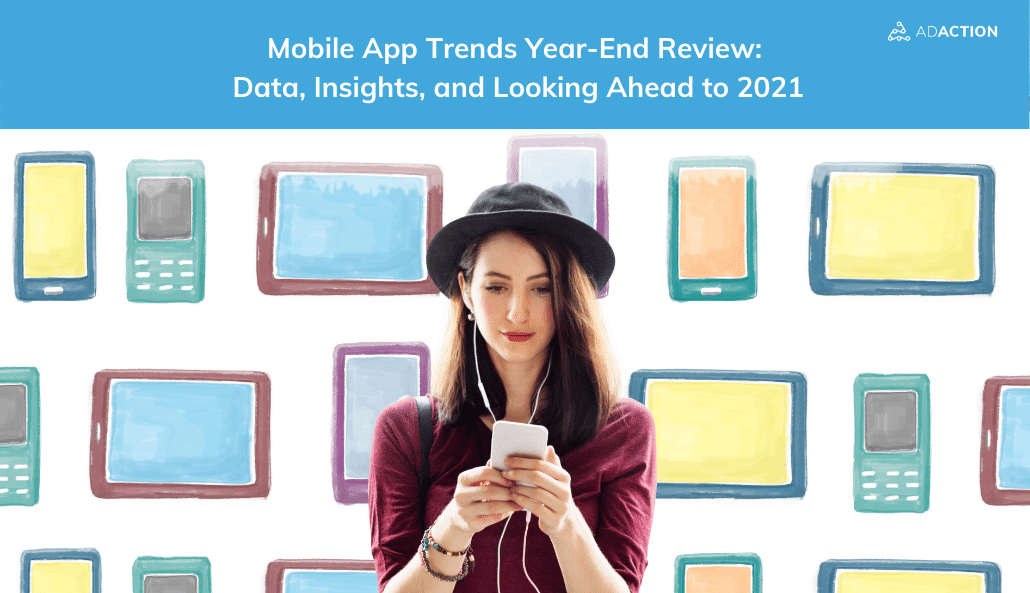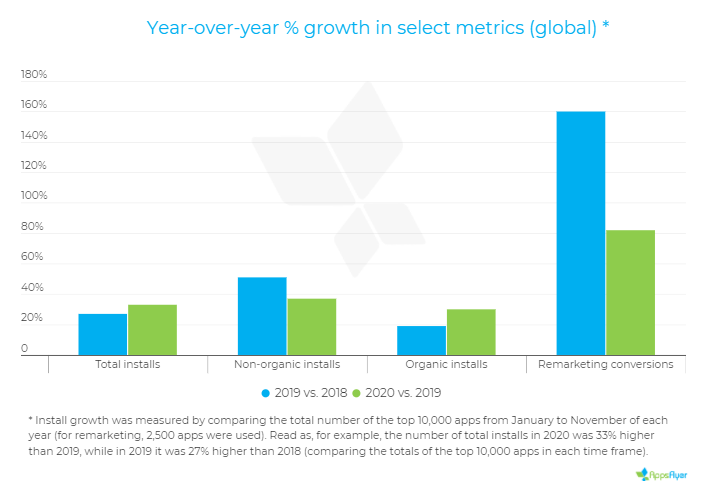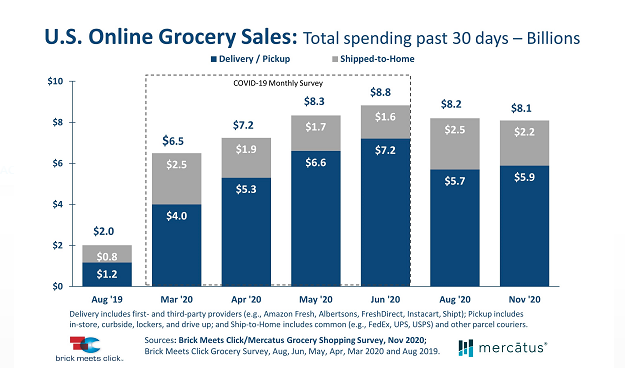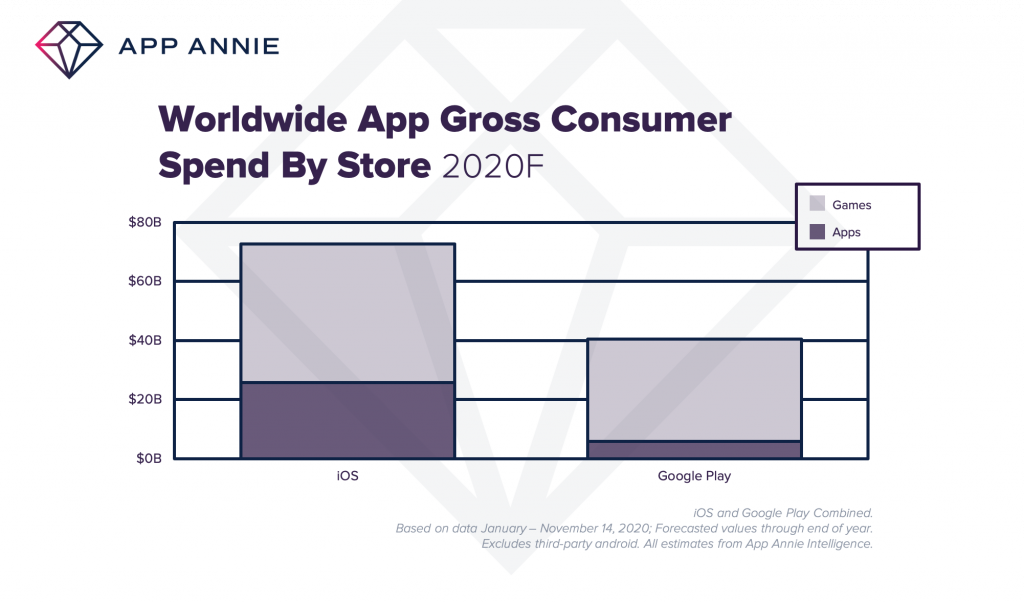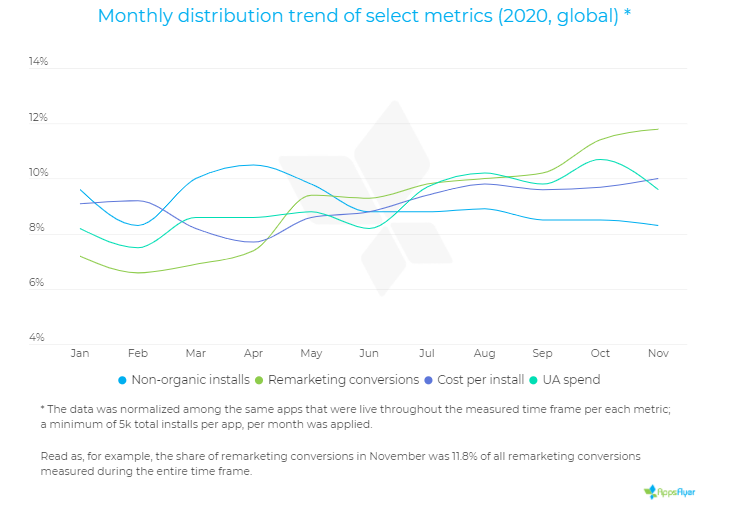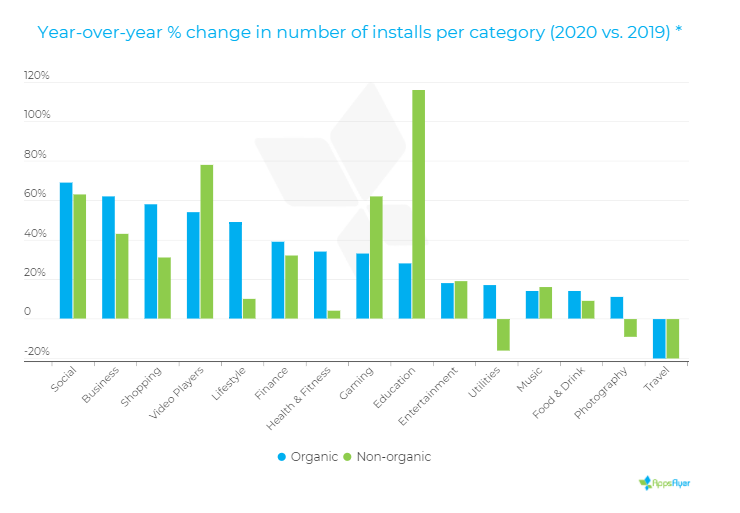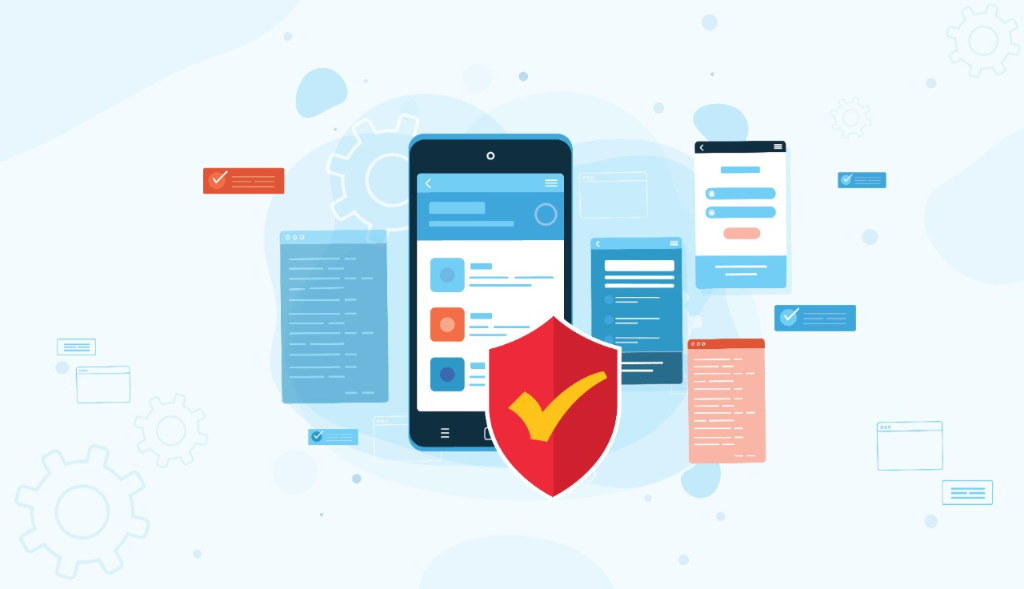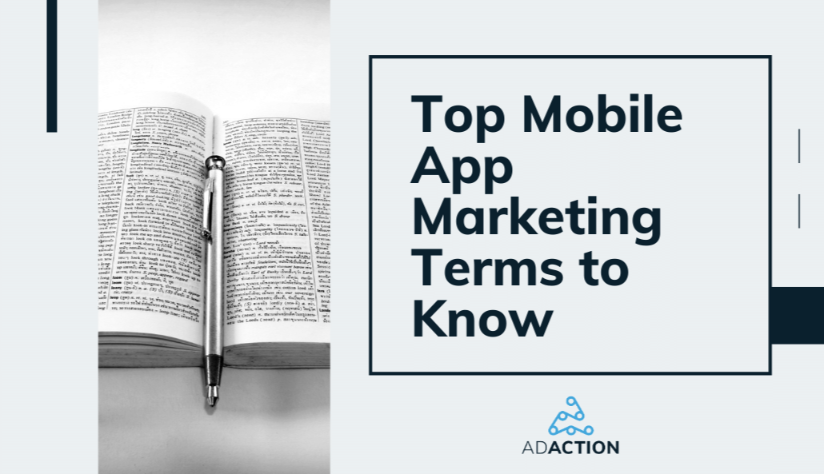So long, 2020—a year we’ll never forget, but most of us aren’t sad at all to see it go. While the pandemic impacted every business in some way or another, the world of mobile app marketing fared well in many categories. The mobile app trends of 2020 were full of surprises and giant leaps that would have normally played out over many years.
In this post, we’re breaking down the year that was and looking ahead to what to expect for 2021.
App Downloads Increased by 33%
With more people at home and even more reliant on mobile devices, app downloads were up 33% for the year. Within those numbers, the industry saw organic installs beat non-organic installs.
Mobile App Trend Takeaways
Some of these categories would include VPNs (virtual private networks), video conferencing, and other remote work tools. With companies sending most employees home to work, which has, for the most part, stayed steady since March, these tools were a necessity.
Another category that saw a rise was the use of mobile apps for grocery shopping. Grocery shopping, for the most part, pre-COVID was an activity done in store. According to Brick Meets Click, a minimal amount of grocery shopping was online, at around $2 billion. In 2020, those numbers climbed rapidly. As of November 2020, eCommerce accounts for $8.1 billion. The numbers for 2020 are all records!
To meet this demand, grocery stores responded by developing and improving their apps. Kroger launched a new app that resulted in a 92% digital sales increase. Walmart integrated its grocery and main apps for a more cohesive experience.
Users Had More Free Time
When the shutdowns began in March, it put millions of people out of work. In many cases, their industries crumbled (think live events). Those workers had no alternatives and plenty of free time to stream movies, play games, or spend more time in apps, in general. That was especially true for the Gen Zers. Time spent on apps grew significantly for this generation in categories like finance, shopping, and entertainment.
With idle hands, the go-to for many is their smartphone. Apps that could attract their attention for leisure or practical reasons had big wins in 2020. (Calm is a great example!)
Organic Downloads Spiked
Organic installs are a great metric for mobile app marketing. They don’t happen in a bubble. In fact, organic installs are often a happy consequence of mobile app advertising, like burst campaigns.
Organic downloads are also highly dependent on App Store Optimization (ASO). Apps that took the time to refresh their titles, descriptions, keywords, and visuals provided a better experience. Those with a high quality of positive reviews also hooked users because of social proof.
iOS and Google Play Hit $112 Billion in Spend Globally
People are downloading more apps and spending more, according to App Annie. There was a new annual record for spending on mobile apps and games. iOS had much greater growth.
According to App Annie’s analysis, $0.71 of every $1 went to games across both app stores. For apps, the increases were related mostly to subscription-based models for categories like Photo, Video, Social Media, and Entertainment.
Mobile App Trend Takeaways
A boom in mobile gaming accelerated spend. How do the games that benefitted do this? Some possibilities could be that they executed CPI (cost per install) campaigns well or launched burst campaigns when they realized they had a passive audience that needed something to do.
Subscription models are gaining ground. There’s a subscription for just about anything, and consumers are comfortable with this model and favor it.
For more deep level engagement that results in in-app spend, mobile apps may have leveraged CPE (cost per engagement) campaigns to move users through their funnel and become paid users.
CPI Had Dips and Spikes
Mobile app marketers are always looking to reduce CPI costs. The year wasn’t substantially volatile, but there were some dips and spikes. The drop came during the early days of lockdowns from March to April. Many mobile app marketers were executing campaigns to attract users that either had new needs or plenty of free time. Overall, however, competition was less during this period.
Then CPIs rose 30% post-lockdown, even though non-organic downloads did not. At the same time CPI was spiking, user acquisition (UA) was going up and down, with a big drop off in November.
Mobile App Trend Takeaways
The connection between CPI costs and UA spending were not in lockstep. You’d expect these two data points to have a similar path. UA spend peaked in October 2020, yet CPI stayed steady from September to October. Why? UA spend could have been going to other efforts like retargeting. CPI campaigns could have been more strategic and relevant, working better to convert more users.
User App Behavior Reflected the Times
Another interesting data point to consider is the install rates by app category, both organic and non-organic. The year over year growth, for most categories, was substantial and reflected the times. Per the AppsFlyer chart below, those with the highest spikes include Social, Business, Shopping, Video Players, Health and Fitness, Gaming, and Education. Those categories certainly represent the needs of a changing consumer.
Consumers were looking to have social interactions via apps, workout at home, play games, and learn.
Mobile App Trend Takeaways
To look at this mobile app trend, you need to hypothesize about the future and 2021. Will consumers still have the same needs? For the most part, it should hold true for the first half of 2021. The general public should have access to the COVID vaccine in the spring. The vaccine is the first step toward moving out of a pandemic. However, as long as the pandemic holds, most people will continue to stay at home.
Further, many of the new lifestyle changes adopted since COVID are likely to remain, such as continued use of eCommerce for shopping and employees working from home.
What Mobile App Trends Will 2021 Bring?
As noted above, trends by category usage will likely hold until the pandemic is officially over. The biggest mobile app trends for 2021 will include:
IDFA
Apple’s new privacy measures are still in limbo. iOS 14 moved forward, but not the IDFA (identifier for advertisers) changes didn’t. An interesting development is Facebook’s response. They claim the removal of IDFA will hurt small businesses and launched a media campaign saying such.
5G Technology
5G will be more widely available in 2021. This technology offers greater speed and efficiency. 5G will reduce latency and provide greater functionality for mobile apps, providing developers new opportunities for integrations and higher quality.
Brick and Mortar Using Beacons to Elevate Experiences
In-store shopping isn’t dead. It’s changing significantly, but it’s hard to replicate these experiences online. Brick and mortar locations need an assist, and one option is understanding customers better with beacon technology. While some efforts were underway before Covid-19 with Google and Apple providing beacon platforms, it’s currently on pause.
However, it could be what retailers need to deliver next-generation experiences. Basically, beacons are transmitters that broadcast a signal, which can be read by any type of smart device. If a consumer walks into a store with the brand’s app on their phone, the beacon sends a signal to that app, enabling push notifications.
For example, if a customer walks into a store to pick up an online order, the app could send a message with recommendations for purchases that go with this and even provide discount codes. Retailers need to rethink their view on apps as something a customer only uses outside of their stores.
The Next Generation of Smartphones
Consumers can expect something very unique for Android smartphones in 2021—foldable displays. With a foldable display, users have a bigger screen but an overall compact size.
How might this change how consumers use and interact with apps? For one thing, app developers will need to ensure their apps are able to respond to screen sizes (folded vs. non-folded). Experts say this might impact gamers the most.
Mobile App Trends: Generational Leaps in One Year
The mobile app trends of 2020 may be a once in a lifetime kind of acceleration. So much change occurred in such little time. Now that there’s time to reflect, you can dig into the insights and prepare for 2021.
Questions about your mobile app marketing strategy for 2021? Connect with our experts today.
